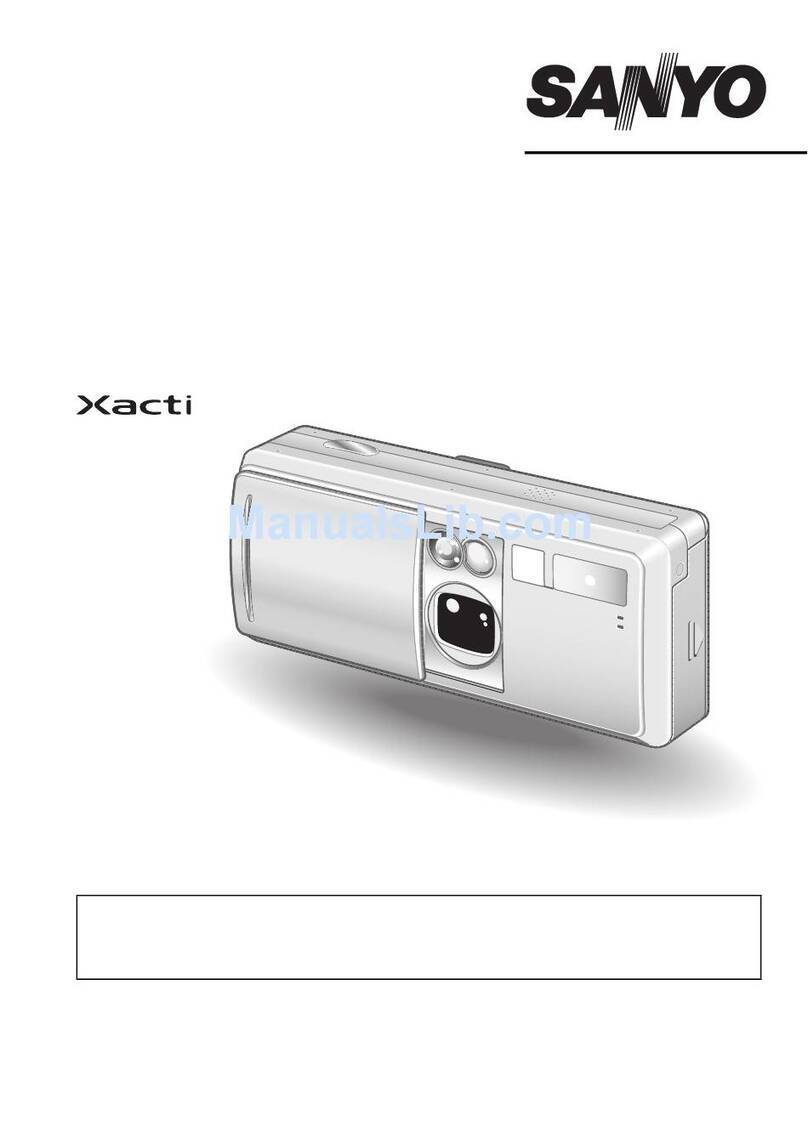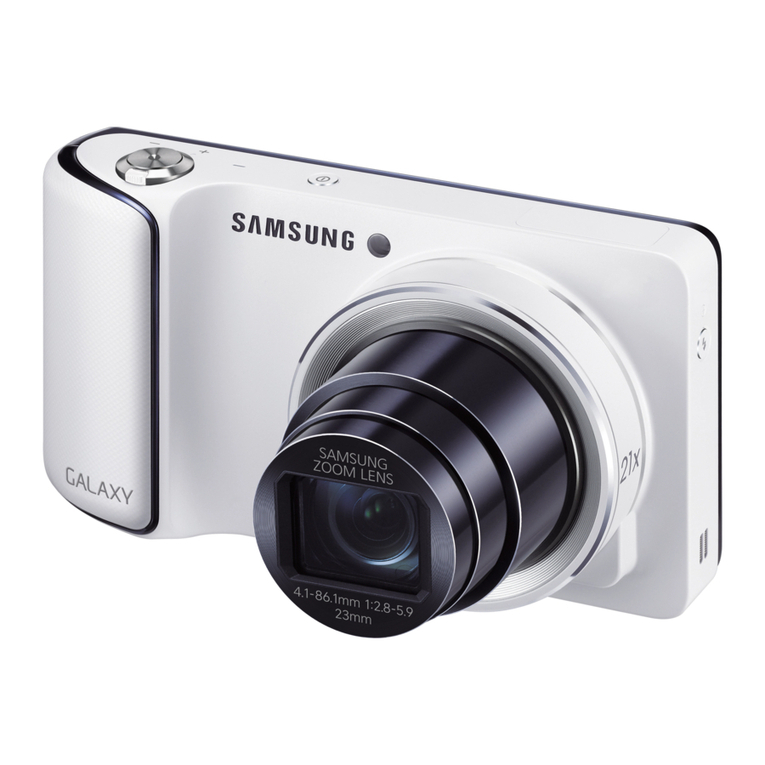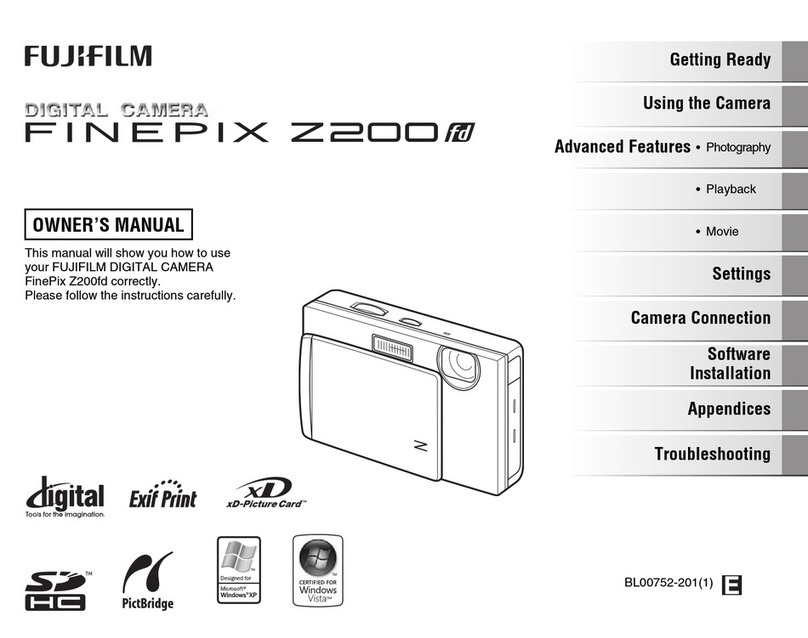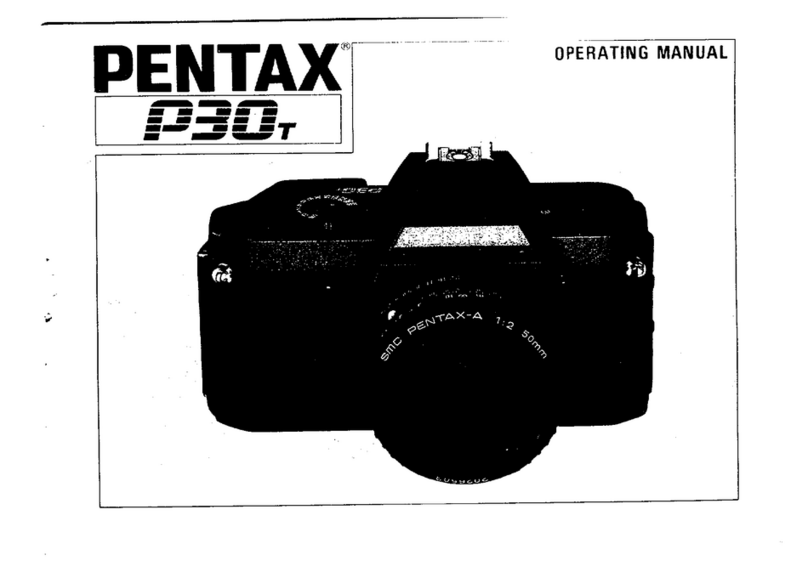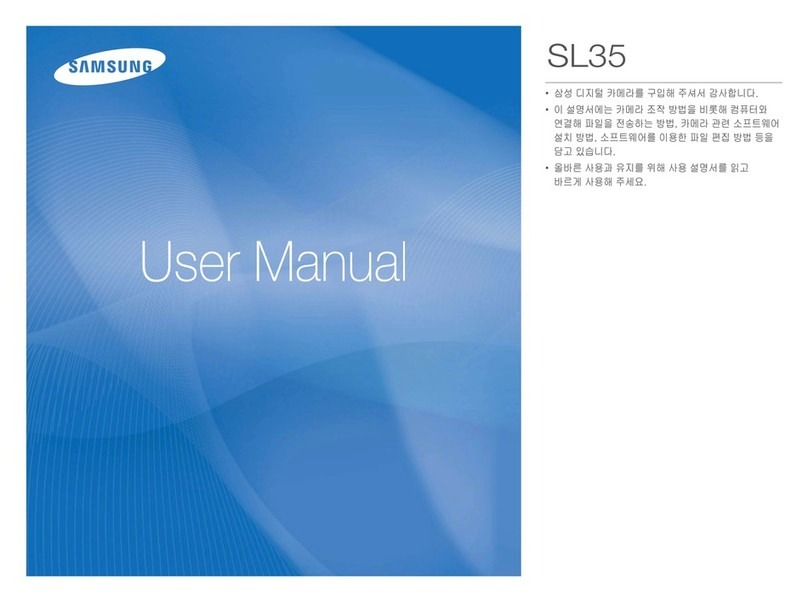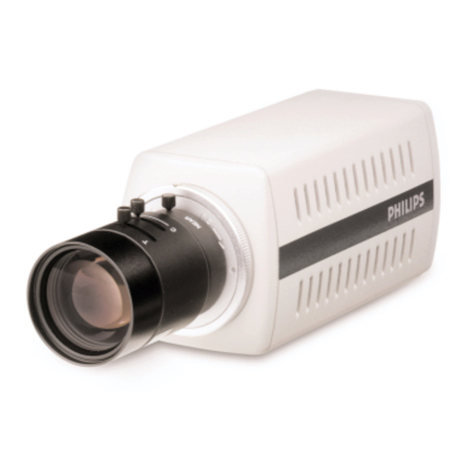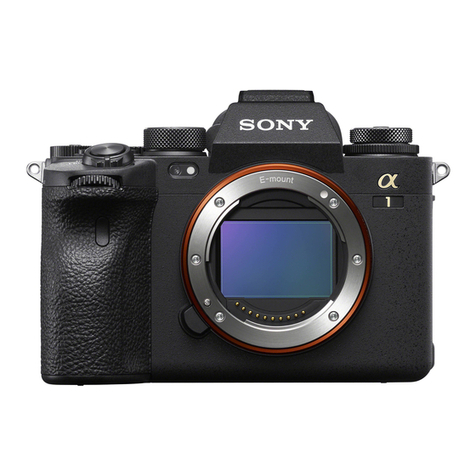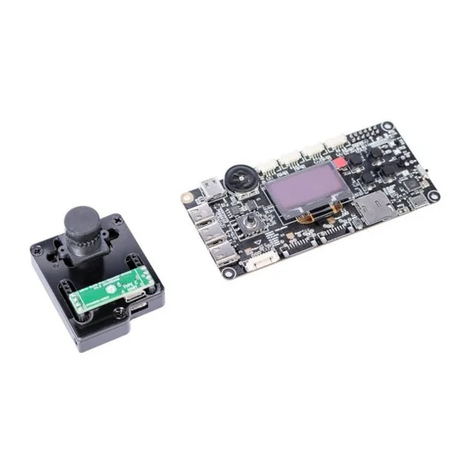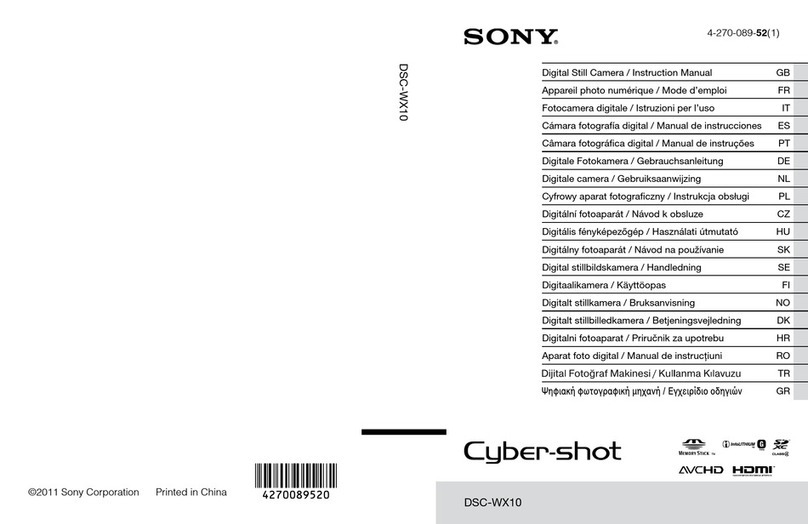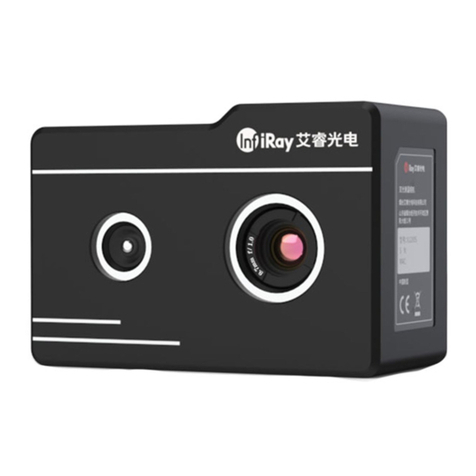GOODWIN RC32C User manual

RC32C / RC16C
ELECTRONIC CAM
incorporating
X112
OPERATOR MANUAL
D1011 Version 1.7
C:\Products\Cams\RC32C\rc32c manual.doc
Goodwin Electronics
6 Lumina
Martindale Road
Croft Business Park
Bromborough
Wirral
CH62 3PT United Kingdom
Tel: +44 ( 0 ) 151 33 44 555
FAX: +44 ( 0 ) 151 334 1616

RC32c and RC16C Operators Manual
Goodwin Electronics D1011/v1.7 /23/10/03 Page 2
Documentation
This product is available with one manual;
RC32C / RC16C Operators Manual.
This is the operator manual which has been written for an operator to refer to when using the electronic
cam system in day - to - day operation.
Please note
The contents of this manual are designed to give the reader an understanding of how the RC32C and
RC16C operates and assumes that he is familiar with the machine onto which the unit is connected. The
particulars of the product, and its use are given by Goodwin Electronics in good faith. However, it is
acknowledged that there may be errors and omissions in this document. We shall not be liable for the
loss or damage whatsoever arising from the use of any information in, or any omissions from, this
document.

RC32c and RC16C Operators Manual
Goodwin Electronics D1011/v1.7 /23/10/03 Page 3
CONTENTS
1. INTRODUCTION 4
1.1 MODEL NUMBER DESCRIPTION 4
2. FRONT PANEL AND DISPLAY LAYOUT 5
2.1 FIGURE 15
3. INSTALLATION 6
3.1.1 NOTE: 6
3.2 POWER UP 6
3.3 TEST / TIMER 6
3.4 DATUMING 7
3.5 BATCH FACILITY 7
3.6 CHECK MODE 7
3.7 PROGRAM MODE 7
3.8 CLEAR FACILITY. 9
3.9 COPY FACILITY 9
3.10 OFFSET FACILITY 9
3.11 TIMERS 10
3.12 DUAL SPEED CAMS 10
3.13 RECORD MODE 11
4. EXTERNAL INPUTS 12
5. OPERATION 13
5.1 ENCODER SIMULATION 13
6. ENCODER COUNT REVERSAL 14
7. SERIAL COMMUNICATIONS 15
7.1 TRANS PG IN COMMUNICATIONS 15
8. PARAMETER MODE 16
9. SETTING PARAMETERS 17
10. TYPICAL PARAMETER RECORD 19
10.1 CAM PARAMETER RECORD 19
11. ERROR MESSAGES 20
12. CONNECTIONS 21
12.1 EXTERNAL INPUTS 21
12.2 ENCODER CONNECTIONS 21
12.3 OUTPUT CONNECTIONS - 37 D-TYPE CONNECTON 22
12.4 TYPICAL OUTPUT CONNECTIONS 23
13. TECHNICAL SPECIFICATION 24
14. ABSOLUTE ENCODER TYPES. 25
15. POWER CONNECTIONS. 26

RC32c and RC16C Operators Manual
Goodwin Electronics D1011/v1.7 /23/10/03 Page 4
1. INTRODUCTION
The information enclosed in this manual is the basic information required to install and operate the
Electronic Cam.
The device is ideally suited for the myriad applications where angular command positions are needed.
The Electronic Cam has none of the financial handicaps of the multi-purpose PLC systems otherwise
available.
Absolute programming simplicity is achieved using step by step command inputs in degrees, for prompt
sequence preparation and alteration.
Feedback data from either a bi-directional incremental encoder or a gray code absolute encoder is
required.
The keypad is sealed in a colour coded membrane facia to give complete protection against the ingress
of dirt and moisture. The keys are positively activated by depressing and not just touch sensitive.
No ancillary software is required to complement or support the Electronic Cam. This complete and
ready to connect unit provides a neat alternative to bulky hard wired panels or mechanical controls.
Data edits and updates may be interchanged with initial programmed values whilst the Cam is in the
RUN mode. This provides enormous advantages to continuous production control applications. The
ability to adjust interacting elements without the interruption of production is often essential.
Multi programme “batch” options allows up to nine individual output profiles to be selected at the touch of
a button. Production variations or product changes can be instantly catered for without the need for
further programming.
A passive RS232 interface is available to enable larger overseeing controls to interrogate and program
the Electronic Cam (Factory option).
For voltage free contact output requirements a self-contained relay module is available, which can be
powered by the 24 VDC supply sourced from the Cam. Relay modules handle up to eight outputs and
simply link direct to the Cam.
Two types of case styles are available for the cam unit which are suitable for either stand alone
installation or for panel mounting with integral surround .
The Electronic Cam is available as standard with 220/240 or 110/120 (factory set) volt options for a 50
or 60 Hz supply but can be adapted for other voltages if required.
The Electronic Cam has RPM displayed as standard.
Goodwin Electronics have a policy of continual product improvement and we reserve the right to alter the
information contained in this manual without prior notice.
1.1 MODEL NUMBER DESCRIPTION
RC32C P 2 0 09G 5 2 / X100
X number indicates a special unit
Mounting Panel - P Outputs
Standalone - S 1 - PNP Outputs
2 - NPN Outputs
Supply Voltage
110/120V AC 50/60 Hz - 1
220/240V AC 50/60 Hz - 2 Encoder Supply
24 VDC - 3 5 - 5 Vdc TTL
4 - 12V dc
1 - 24V dc
Serial Comms.Encoder Type
RS232 - R 09G - 9 bit absolute encoder
None - 0

RC32c and RC16C Operators Manual
Goodwin Electronics D1011/v1.7 /23/10/03 Page 5
2. FRONT PANEL AND DISPLAY LAYOUT
2.1 Figure 1

RC32c and RC16C Operators Manual
Goodwin Electronics D1011/v1.7 /23/10/03 Page 6
3. INSTALLATION
As with all microprocessor based products, special attention should be paid to protect against electrical
noise. To eliminate potential noise problems and ensure a good installation, we suggest the following:
1. Connect the supply voltage according to the value marked on the rear facia. Ensure the supply is
filtered.
2. Encoder Installation: IMPORTANT! Check that the encoder supply voltage from the unit conforms
to the encoder specification, (refer to MODEL DESCRIPTION above for the encoder supply voltage).
Install in accordance with the wiring diagram from the encoder manufacturer and the pin connection
list given in section 12.2. Use good quality unbroken screened signal cable direct from the
encoder to the Electronic Cam.
3.1.1 NOTE:
1 The encoder supplies angular information to the RC32C upon which it will react according to the
programmed data. If the encoder installation is poor and false information is given to the CAM, the
system will malfunction.
2 When routing the encoder cable back to the unit keep the cable away from electrically noisy cables
and high voltage lines i.e. .motors etc.
3. If required, connect external inputs (STOP, START and RESET ) to suitable momentary push
button or other pulse generating devices. Pulses must stay high for a minimum of 4mS. see section
12.1 for wiring information. Ensure that all leads are properly screened and routed away from noisy
electrical sources.
4. Connect the 37 way D connector in accordance with the output connection list given in section 12.3.
Use screened cable and connect the screen to the earth stud on the rear of the unit. Avoiding noisy
electrically sources is a wise precaution.
5. Relays and contactors switching heavy inductive loads located close to the system should be
suppressed.
6. The RC32C electronic cam is now installed and ready for power up.
7. If powered up for the first time remember to set the configurable parameters required as outlined in
sections 8 and 9.
3.2 POWER UP
On powering-up, the unit will display the installed software version number in the A window for
approx. 5 sec. After this time, or if any key is pressed the Rc32c will enter its normal display mode
with the encoder angle displayed in the A window and the RPM value in the B window. All outputs
are disabled.
The software version number should be recorded along with the parameter records and referred
to should any queries arise.
3.3 TEST / TIMER
In the normal mode this key will initiate an internal test program can be activated providing the unit
is NOT in the RUN MODE. This activates a display sequence to test all the display segments and
all the front panel leds. Pressing the ENTER key whilst in the test mode will freeze the display.
Repressing the ENTER key will cause the test to continue. After completing the display test the
routine will carry out a power up sequence.
In the PROGRAM mode this key configures the cam to have a time dependent output. Further
information on this topic can be found in section 3.11.
3.4 DATUMING
When using an absolute encoder the system can only be datummed using the external
datumming facility, see section 4. When the datum command is detected the display angle is set
to zero. This datum point will be stored internally and is preserved even when power is removed
from the unit.

RC32c and RC16C Operators Manual
Goodwin Electronics D1011/v1.7 /23/10/03 Page 7
3.5 BATCH FACILITY
The RC32C can store upto 9 batches. This facility allows the user to program up to nine sets of 32
cam sequences which are then available for quick selection when reconfiguring a machine for a
different product. To select a batch proceed as follows,
The new cam sequences associated with this batch will now be available for programming, editing
or running.
The system is designed so that the batch number cannot be changed when in the RUN mode.
3.6 CHECK MODE
This mode can only be entered when the program inhibit line is active. This mode allows an
operator to check the programmed values for any output whilst the program mode is inhibited. To
select the check mode, press
The displays will be of a similar nature to those seen in the PROGRAM MODE except no display
will flash.
In this mode the letter “u” will be displayed in the mode window.
The RUN key is still active whilst in CHECK MODE.
To examine any cam ON and OFF data values select the cam number required. Thus if CAM 4 is
required use the following key sequence,
The programmed angles of CAM 4 will now be displayed. To scan through the data for cam 4
upwards keep pressing the ENTER key.
To leave CHECK MODE press the MODE key again.
3.7 PROGRAM MODE
In this mode data can be entered for all the ON and OFF angles combinations for each of the can
outputs. In the RC32C there are 32 outputs available and in the RC16C there are 16 outputs
available. A set of 32 or 16 ON/OFF angles is known as a BATCH PROGAM or BATCH. The
remainder of this manual will refer to the RC32C version.
All 9 batches can be programmed In this way.
Batches cannot be changed if the RC32C is in cycle, but the current batch can be programmed or
the values of programmed data can be altered with the RC32C either in or out of cycle.
Note that if in cycle the newly entered data is only valid AFTER the OFF data has been entered.
To enter this mode press,
If the password facility has been activated (see parameter page 9) the unit will request the
operator to enter a 4 digit PIN number. If the correct number is entered the unit will enter the
program mode.
If the password facility is deactivated the unit will bypass the PIN request routine.

RC32c and RC16C Operators Manual
Goodwin Electronics D1011/v1.7 /23/10/03 Page 8
In this program mode the angles at which the 32 outputs switch on and off can be programmed
and viewed. The mode window will display the letter “P” on left to indicate that program mode
has been entered.
The BATCH display will show the currently selected BATCH NUMBER.
Select the batch to be programmed as outlined above.
On entering the program mode the cam number will be set to 1 with
window A showing the angle at which the output of cam 1 comes ON
window B showing the angle at which the output of cam 1 comes OFF
Window A will be flashing to indicate that the On angle can be changed if necessary.
If the window displays CCC then there is no programmed data for the output being viewed.
Enter a value using the number keys on the keypad or else use the JOG keys.
Values larger than 359 degrees will not be accepted and the display will default to zero awaiting
re-entry of correct data.
Thus to enter an ON angle of 54 proceed as follows,
After pressing ENTER the data in window A will stop flashing and window B will start flashing.
The OFF angle can now be entered. If an OFF angle of 89 degrees is required then proceed as
follows,
When the ENTER key is pressed with the B window flashing the CAM NO display will increment
by one and window A will start flashing again. At this point the data for cam 1 is valid
An OFF angle of 360 can be entered (see below).
Note: If both A and B angles are programmed to the same value then the output will stay off.
If a cam output is required to be On at all angles then enter the OFF angle as 360 degrees. In this
case the On angle is ignored. A value of 360 degrees cannot be entered using the JOG keys.
Cams 2 to 32 can be programmed in exactly the same manner. In the limited program mode only
cam numbers up to the value set on parameter page 4 can be programmed in this way.
To examine the programmed angles of any of the cam outputs, say CAM NO 4, the following
sequence can be used,
Display A and B will now show the programmed angles for cam number 4.
However if there are some outputs which have not been programmed (CCC) and one of these is
selected using the above key sequence then the unit will select the lowest output which is
unprogrammed.
For example if cams 1 to 12 have been programmed and an attempt is made to select cam
number 16 cam 13 will be automatically selected since this is the next cam that can be
programmed.
Pressing the ENTER key continuously allows the operator to scan through all of the programmed
values.
Programming can be carried out whilst the machine is running, this enables fine tuning of a
process. When operating in this manner, great care must be taken not to enter values which could
cause damage to the machine. It is therefore recommended that this facility only be used when
absolutely necessary.

RC32c and RC16C Operators Manual
Goodwin Electronics D1011/v1.7 /23/10/03 Page 9
There is a JOG up and a JOG down facility that can be used for fine tuning the ON and OFF
angles. This can be used by simply selecting the cam output to be modified and the using the
appropriate down or up key,
The entire program in a batch can be offset by 0 to +/- 359 degrees using the OFFSET facility
see section 3.10.
3.8 CLEAR FACILITY.
Pressing the decimal point key twice in quick succession will clear all the programmed values. It
is useful to do this at the start of programming. Only the batch program currently selected will be
cleared.
Clear is only active when in PROGRAM MODE and not in the RUN mode.
3.9 COPY FACILITY
In the program mode any batch program can be copied into another batch by using the COPY
key.
Select the batch to be copied, for example BATCH 1 and then press COPY. The display will
indicate,
1 to 0
copy
with the 0 flashing. Enter the batch number to which batch 1 is to be copied and press ENTER.
Deselect the copy mode using the COPY key. The ENTER key must be pressed for copying to
occur.
3.10 OFFSET FACILITY
The offset facility is activated by selecting CAM 0.
It cannot be used with the encoder simulation mode.
Using this facility an entire set of programmed values, (i.e., every On and OFF angle in a batch),
can be incremented or decremented in steps of 1 degrees. The A axis will display O.SET and the
B axis will display the offset that has been applied to the program data. Using the JOG keys this
offset can be varied between + 359 and -359 degrees, unless the partial inhibit program mode is
selected (see section 14), when the offset is limited to +/- 10 degrees.
NOTE: If there are any timers programmed in the batch being offset they will not be affected. The
electronic cam operates by having all of the batch data in memory and when an operator selects a
batch it transfers data of the selected batch to the WORKING BATCH DATA. The offsetting
facility affects both the working batch data and the stored batch data and is saved as part of that
batch data.
The stored offset is zeroed by using the CLEAR facility (section 3.8).
If limited program mode is set via the external input lines then the offsets are limited to +/- 10ofor
ALL cam outputs.
The offset mode can be exited by selecting cam 1.
3.11 TIMERS
If this facility is enabled (parameter 5, see sections 8 and 9 ) then cam outputs 1 to 8 can be
configured as timers that are activated at a specified angle. In this mode the A display is the
activation angle and the B display is the value of time for which that cam output will remain ON,

RC32c and RC16C Operators Manual
Goodwin Electronics D1011/v1.7 /23/10/03 Page 10
irrespective of the angle, once it has been triggered. Two time bases 0.1 and 1 sec, can be
selected by configuring parameter page 5.
To select the timer mode press the TIMER key and the letter twill be displayed in the B axis
display. The appropriate time can then be entered. Any 3 digit value can be entered. If a cam
output is configured as a timer then it can be reset to the normal cam mode by pressing the
TIMER key once more. This action will automatically set any programmed data in the B axis to
zero.
The timer based cam output will be activated by the encoder reading passing the programmed
angle in either direction. Depending on the parameter setting on page 5 value for the timer can
be set in the range 0,01 to 99,9 sec or 1 to 999 sec.
The timers can be retriggerable or single shot timers by setting the appropriate options on
parameter page 5 (see sections 8 and 9). Retriggerable timers are set to run EVERY time the
encoder angle passes through the programmed ON angle.
Single shot timers can only be activated if the timer is NOT running, i.e., the output of the cam
must be OFF before the timer can be set running.
NOTE: if any cam output is configured as a timers then the scan time of the RC32C is 2.0 ms.
3.12 DUAL SPEED CAMS
If required it is possible to introduce a “gearing ratio of 2 “ on the first 16 cams. If selected this
causes the angle presented by the encoder to be divided by 2. Thus for these cams one complete
revolution occurs every 720 encoder degrees. the remaining cams (17 - 32) function normally
This function is selected by setting the H 16 option on parameter page 7.
The angle display will always indicate true encoder degrees.
if the lower left hand vertical bar is illuminated then cams 1 _16 are in the 0 -359 degree range.
if the upper left hand vertical bar is illuminated then cams 1 _16 are in the 360 _719 degree range.
The angular display is always the encoder angle plus any datum offset that has been set in the
system. The same datum is applied to all cams even when the gear ratio of 1:2 has been
selected.
Note that when programming cams 1 to 16 it is necessary to program the switching angle
including the gearing ratio, thus if the following is programmed for a cam,
ON ANGLE 10 OFGF ANGLE 20
then the cam switches on when the displayed angle lies between 20 and 39 with the lower bar
illuminated (if an absolute system) .
3.13 RECORD MODE
The RECORD mode can be selected by rapidly pressing the COPY key when in the default mode
and out of cycle.
If JOG UP is pressed, data is uploaded to a remote unit via the RS232 serial link.
If JOG DOWN is pressed, data is downloaded from a remote unit via the RS232 serial link.
When the RS232 is active the B display will indicate]
rc for downloading (ie., data is coming from a remote terminal to the cam)
tr for uploading (ie., data is going from the cam to a remote terminal )
A time stamped record of certain events is stored in the cam and can be viewed in this mode.

RC32c and RC16C Operators Manual
Goodwin Electronics D1011/v1.7 /23/10/03 Page 11
The A display indicates the code number of the event (se list below) and the B display gives the
time stamp of when the event occurred in minutes (displayed as a hexadecimal number).
The batch window displays F to indicate the RECORD mode and the next digit will have a bar that
toggles every minute to indicate that the internal clock is functioning.
CODE NUMBERS
01 Power up.
02 RS232 upload has occurred.
03 RS232 download has occurred.
04 RS232 failed.
05 RUN mode deselected via keyboard RUN key.
06 RUN mode selected via keyboard RUN key.
05, 08 External RUN deselect request from digital input line.
06, 09 External RUN select request from digital input line
0A External DATUM request from digital input line.
01, 0B System has had an NMI signal.
0C Reserved.
The record and incremental time clock can be cleared by rapidly pressing the decimal point key
twice in quick succession.
To view back through the record file press ENTER. Note that the latest record has the lowest
number, ie., 1.
To exit this mode press the COPY key twice in quick succession, or press the MODE key.

RC32c and RC16C Operators Manual
Goodwin Electronics D1011/v1.7 /23/10/03 Page 12
4. EXTERNAL INPUTS
EXTERNAL PARTIAL PROGRAM INHIBIT -(Terminal 2)
This external line allows the use of a key lock to inhibit part of the programming facility.
If activated then no cam outputs above the value set on page 4 of the parameter mode can be
programmed. Also offsets are limited to +/- 10oof the programmed values for ALL cam outputs.
All other keyboard functions remain unaltered.
EXTERNAL START (Terminal 5)
External START will set the unit in cycle providing the TEST sequence is not activated.
This input must stay closed for a minimum of 4ms.
EXTERNAL STOP (Terminal 4 )
External STOP will take the unit out of cycle This input must stay closed for a minimum of 4ms.
EXTERNAL DATUM (Terminal 3)
This external function zeroes the angular display and may be employed as a manual operation, or
as an automatic function of an alignment sequence employing a sensor or microswitch. The line
should be closed for a minimum of 4ms.
SIMULATION ENABLE (Terminal 9)
This external function will simulate an encoder moving in order to test run a machine. Care must
be taken to ensure that no obstructions are in place since the cam outputs will be active if the unit
is placed incycle.
The JOG UP and JOG down keys will speedup or slow down the software simulation.
EXTERNAL PROGRAM INHIBIT (Terminal 6)
This external function allows the use of a key lock to completely inhibit the program mode and
batch change facilities. All other keyboard functions remain operational. In particular the unit can
be switched in and out of the run mode. The program values can be inspected by selecting the
VIEW mode using the MODE key.

RC32c and RC16C Operators Manual
Goodwin Electronics D1011/v1.7 /23/10/03 Page 13
5. OPERATION
When programming has been completed and the machine is ready to run, press RUN on the keyboard,
or use the external START line. The CAM NO display will show the letter “r”.
The RUN led will illuminate and the 32 outputs will switch according to the programmed values and the
angle of the machine. The CAM OUTPUT STATUS leds on the front of the unit will illuminate when the
corresponding cam output is switched on.
If a non zero creep feed value has been set on parameter page 3 and the unit is placed incycle then if
the encoder does not exceed the specified number of degrees/sec an error code will be generated. The
nature of the error will depend upon the setting on parameter page 10.
To inhibit all cam outputs press the RUN key again, or use the external STOP line.
5.1 ENCODER SIMULATION
The internal encoder can be set in motion by using the external simulation line. When this has been
done the external encoder channel is ignored and an internal software encoder is set in motion. The
speed of this encoder can be increased and decreased by using the JOG UP and JOG down keys.

RC32c and RC16C Operators Manual
Goodwin Electronics D1011/v1.7 /23/10/03 Page 14
6. ENCODER COUNT REVERSAL
The direction of counting of the encoder signals can be set by altering the sign indicated on parameter
page 1.

RC32c and RC16C Operators Manual
Goodwin Electronics D1011/v1.7 /23/10/03 Page 15
7. SERIAL COMMUNICATIONS
The models RC32C and RC16C have a serial communication protocol compatible with Trans PG IN via
the 25way D type connector on the rear of the unit. Connection is via a simple 4 wire V24 interface,
(transmit data receive data, CTS and ground). Table 7.1 shows the standard pin out connection.
When the RS232 is active the B display will show tr. if the cam is uploading data and rc if the cam is
having data downloaded to it. The A display will indicate the number of bytes received or transmitted.
There is a time-out of approx. 30 sec which will be activated if there is an error detected in the RS232
transmission. This will also produce an error code 7. Pressing any key will clear the error message.
Under some conditions this time-out can be defeated and thus if the display is not responding to the
incoming/outgoing data for a period of time greater than 30 sec, switch off the power and then restart the
unit 60 sec later.
TABLE 7.1 RS232 CONNECTION 25 WAY D TYPE
PIN CAM connect to PIN PC
7 GROUND 7 GROUND
2 TRANSMIT DATA 3 RECIEVE DATA
3 RECIEVE DATA 2 TRANSMIT DATA
In all communications the cam will be the master of the two units, i.e., the cam will initiate all
communications.
7.1 TRANS PG IN COMMUNICATIONS
Trans PG IN is a simple program to dump and upload data.
Connect the 25 way D type connector as indicated by table 7.1.
Select the RECORD mode and press the JOG UP key, the B display will show tr and the A display will
indicate the number of bytes sent by the RC32C. Data of all the switching points in all batches will be
sent to the serial port in ASCII form. When this has been completed the unit will return to the default
mode.
If the JOG DOWN key is pressed, the B display will show rc and the A display will indicate the number of
bytes received by the RC32C. Data of all the switching points in all batches will be downloaded via to the
serial port in ASCII form. When this has been completed the unit will return to the default mode.
If any transmission fault should occur in the serial link (in either direction) then error code 7 will be
displayed.
Note the communication RS232 configuration is
9600 baud, 8 data bits, even parity and 1 stop bit.

RC32c and RC16C Operators Manual
Goodwin Electronics D1011/v1.7 /23/10/03 Page 16
8. PARAMETER MODE
The electronic cam is fitted with a PARAMETER set-up mode which consists of 9 pages in which are
stored the following parameters which are normally set only on installation of the machine.
A record of the parameters set should be kept on the form provided at the rear of this manual.
PAGE 1. Count direction and encoder type (absolute only).
PAGE 2. Not available
PAGE 3. Minimum encoder creep speed. If the unit is in the run mode and the encoder is rotating below
the set speed an error will be generated and the unit will exit the RUN mode if n is selected on page 10.
If F is selected on page 10 then output 16 is assigned to monitor the state of this test, thus if the encoder
speed is above the value set on this page output 16 will be ON. Note that if F is selected cam 16 cannot
be programmed.
PAGE 4. If it is desired to limit access to certain cams outputs then by using the external limit program
line it is possible to restrict access to cam outputs above the number specified on this page. Any value
between 1 and 32 can be set.
PAGE 5. The time base for any timers set in cam outputs 1 to 8 is set on this page. Values with 0.1 or 1
sec resolution can be selected. The time base selected applies to all cams that are configured as timers.
PAGE 6. This page allows the user to either ,
1. Enable the OFFSET facility.
2. Disable the OFFSET facility.
PAGE 7. This page allows the user to either, (RC32C only)
1. Select a gearing ratio of 1:1 for all cams.
2 .Select a gearing ratio of 1:2 for cams 1 -16 and a ratio of 1:1 for cams 17- 32..
PAGE 8. This page allows the user to set the RS232 baud rate. The following baud rates are available,
9600, 7200, 4800, 3600, 2400, 1200, 600, 300, 150, 110, 75 and 57.
PAGE 9. This page allows the user to enter a 4 digit PIN number that must be entered before entry into
the program and configure modes is allowed. If the number is set to 0 then direct access to these modes
is allowed. The factory set pin number is 7171.
PAGE 10. This page can assign output 16 as an indication that the encoder is rotating at or above the
minimum expected speed.

RC32c and RC16C Operators Manual
Goodwin Electronics D1011/v1.7 /23/10/03 Page 17
9. SETTING PARAMETERS
The parameter mode can only be accessed at power with the 2 keys held down,
The message 1.con will appear indicating that in the A display the parameters for page 1 are being
displayed..
PARAMETER PAGE 1
This page sets the encoder type, the count direction and display resolution.
It should be set according to the encoder selected ,
A Absolute - 1 degree resolution
The sign indicates the count direction. Note that no sign is indicated for clockwise rotation (the + sign is
assumed). To change the sign press the UP arrow key, (the display will flash) and then press the
decimal point key. The sign will change. Press the UP arrow key once more to stop the flashing.
To exit this parameter page press the ENTER key with A deselected. This will take you to page 3 of the
parameter mode.
PARAMETER PAGE 2
This page is not available on absolute cam units.
PARAMETER PAGE 3
This page allows the user to set a minimum rotational speed for the cam which must be exceeded for
the unit to operate. This can be used to ensure that the encoder is rotating. The creep speed value can
be entered by selecting the parameter (UP arrow) entering the value using the numeric keys and then
deselecting the parameter (use the UP arrow once more). A value of 0 disables this test. The switching
accuracy of this test is ~10%
The value entered is the minimum (number of encoder counts per sec / 5 ) that must be received by
the electronic cam.
•If the number of counts fall below this value and n has been set on parameter page 10, then if the
unit is in RUN it will switch itself out of RUN and generate an ERROR 2 signal.
This error code can be reset by pressing any key.
•If however F has been set on parameter page 10 then output 16 is used to indicate the state of the
creep speed test. If the number of counts received is above that programmed on this page then
output 16 will be ON. If the counts fall below the programmed value then output 16 will be OFF. The
unit does NOT drop out of run mode.
Example: output 16 is to trip off at 300 rpm.
No revs/ sec = 5; no of degrees/sec = 5 * 360
no of degrees in 1/5 sec = 5 * 360 / 5 = 360 - this is the creep speed value required.
To exit from page 3 to page 4 press the ENTER key with the A display not flashing (not selected).
PARAMETER PAGE 4
This page allows the user to prohibit programming of certain cam outputs. This feature can only be used
in conjunction with the External Partial Inhibit line. If this line is active then no cam outputs above the
configured value can be altered. To change this value set select the A display by pressing the UP arrow
key and press ENTER. This will increment the number displayed by 1 up to the maximum value of 32. If
the value is 32 then the next press of enter will reset the value to 1.
To exit from page 4 to page 5 press the ENTER key with the A display not flashing (not selected).

RC32c and RC16C Operators Manual
Goodwin Electronics D1011/v1.7 /23/10/03 Page 18
PARAMETER PAGE 5
This page allows the user to set the time base that will be used if any timers are activated in cams 1 to 8.
Two values of 0.1 and 1 sec are selectable. To change this value set select the A display by pressing the
UP arrow key and press ENTER. This will toggle the number displayed between 1 and 0.1..
To exit from page 5 to page 6 press the ENTER key with the A display not flashing (not flashing).
PARAMETER PAGE 6
This page allows the user to enable or disable the OFFSET facility.
If the window is selected and ENTER is pressed the display will toggle between O.Set and OFF. When
the required mode is displayed deselect the window.
To exit from page 6 to page 7 press the ENTER key with the A display not flashing (not selected).
PARAMETER PAGE 7
This page allows the user to enable either a gearing ratio of 1:1 for all cams (n 32)
or a gearing ratio of 2 for cams 1_16 and a gearing ratio of 1:1 for cams 17-32. (H 16)
If the window is selected and ENTER is pressed the display will toggle between n 32 and H 16. When
the required mode is displayed deselect the window.
Select n only if parameter page 10 is going to be set to F.
To exit from page 7 to page 8 press the ENTER key with the A display not flashing (not selected).
PARAMETER PAGE 8
This page allows the user to set the RS232 baud rate.
If the window is selected and ENTER is pressed the display will toggle around the allowed baud rate
values When the required mode is displayed deselect the window.
To exit from page 8 to page 9 press the ENTER key with the A display not flashing (not selected).
PARAMETER PAGE 9
This page allows the user to enter a PIN number that allows the user to enter the PROGRAM and
PARAMETER modes.
With the window selected enter the required number. If a pin number of 0 is entered then the PIN test is
disabled allowing free access to both the protected modes.
To exit from page 9 to page 10 press the ENTER key with the A display not flashing (not flashing).
PARAMETER PAGE 10 (shown as A)
This page allows the user to use output 16 as an indication if the encoder is responding as expected. By
setting the creep speed value in page 3 to an appropriate value output 16 can be used to indicate if the
encoder is rotating above or below an expected speed. If the speed of rotation is above that set on
parameter page 3 then output 16 is on. If it is below the value set then output 16 is off. Note that the cam
remains in cycle at all times when F is selected and error 2 is not displayed. If the speed of the encoder
recovers then output 16 is automatically reinstated.
No cam gearing is allowed if this option is selected.
If the window is selected and ENTER is pressed the display will toggle between nand F. When the
required mode is displayed deselect the window.
To exit the parameter mode press the ENTER key with the A display not flashing (not selected).

RC32c and RC16C Operators Manual
Goodwin Electronics D1011/v1.7 /23/10/03 Page 19
10. TYPICAL PARAMETER RECORD
Page 1 A count direction and encoder
Page 2 N/A N/A
Page 3 10 creep speed
Page 4 30
Page 5 1
Page 6 OFF
Page 7 n32
Page 8 9600
Page 9 1456
Page 10 seen as A n
10.1 CAM PARAMETER RECORD
Date Machine No
Software checksum Initials
Page 1 A count direction and encoder
Page 2 N/A
Page 3 creep speed
Page 4
Page 5
Page 6
Page 7
Page 8
Page 9
Page 10 seen as A

RC32c and RC16C Operators Manual
Goodwin Electronics D1011/v1.7 /23/10/03 Page 20
11. ERROR MESSAGES
The following error messages can be displayed. Error messages cannot be ignored, warnings can.
Error Messages Cause
Error 1 Stored data corrupted. The parameter pages MUST be
reconfigured and new program data entered.
Error 2 Creep speed error. The encoder is not rotating or rotating two
slowly. The encoder may be faulty.
Error 4 Battery low warning. Replace as soon as possible.
Error 5 Entry into parameter pages not allowed
Error 7 RS 232 error.
This manual suits for next models
1
Table of contents


